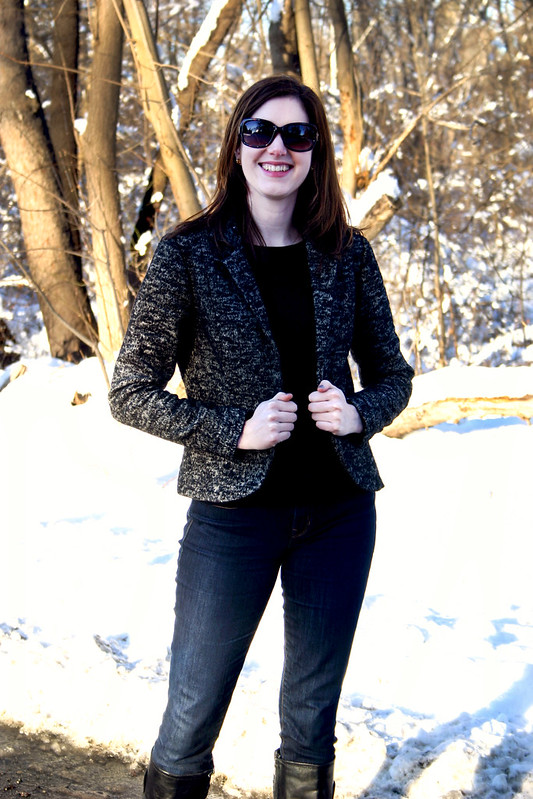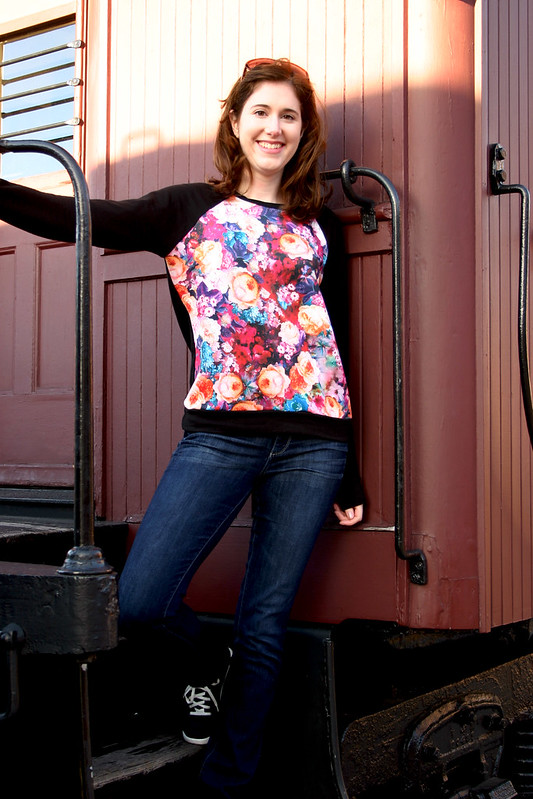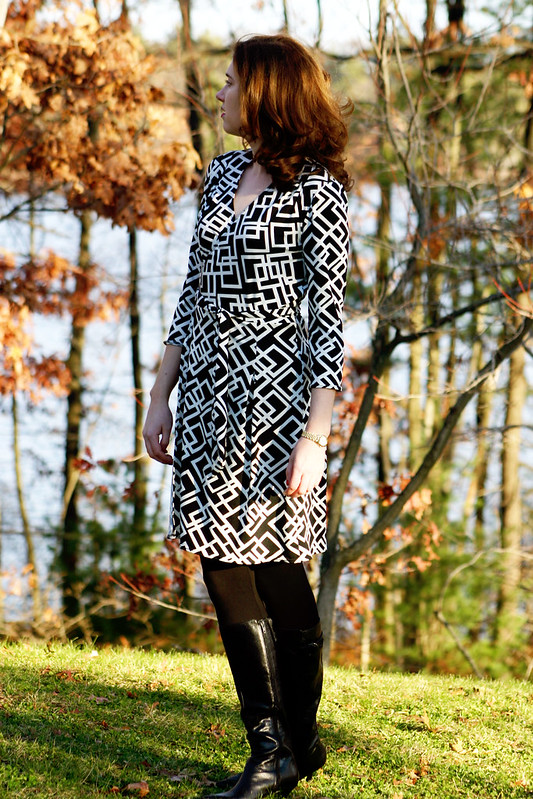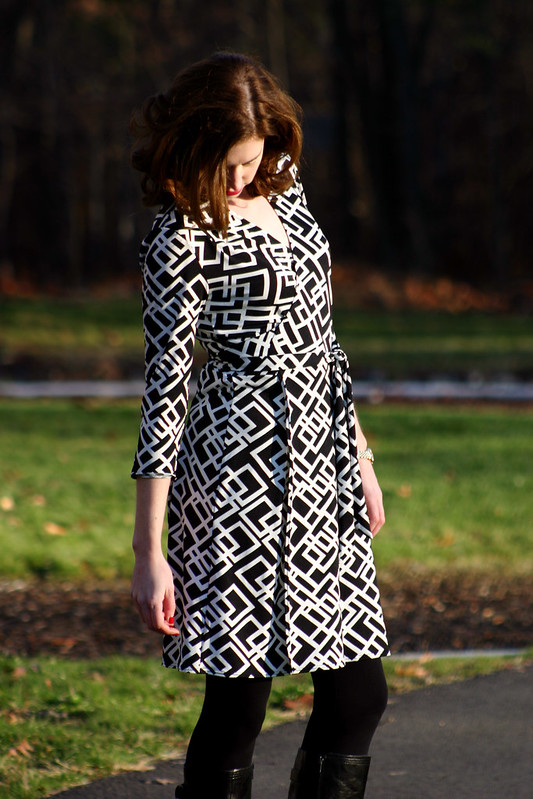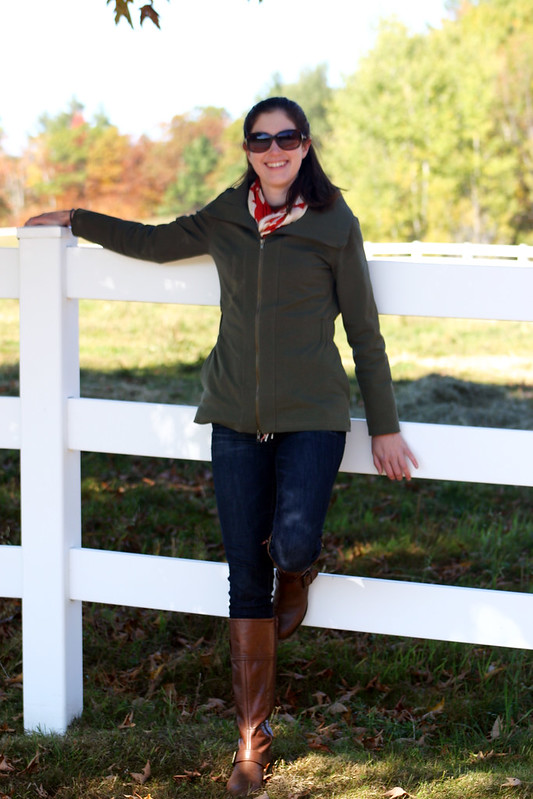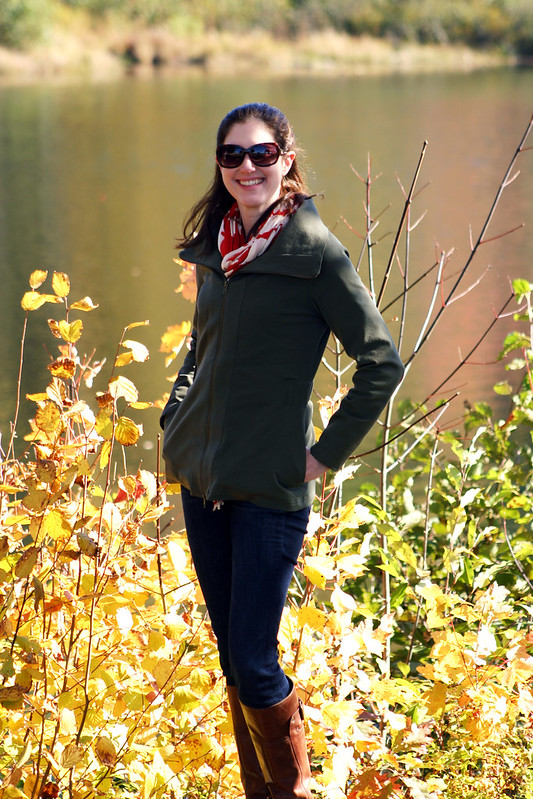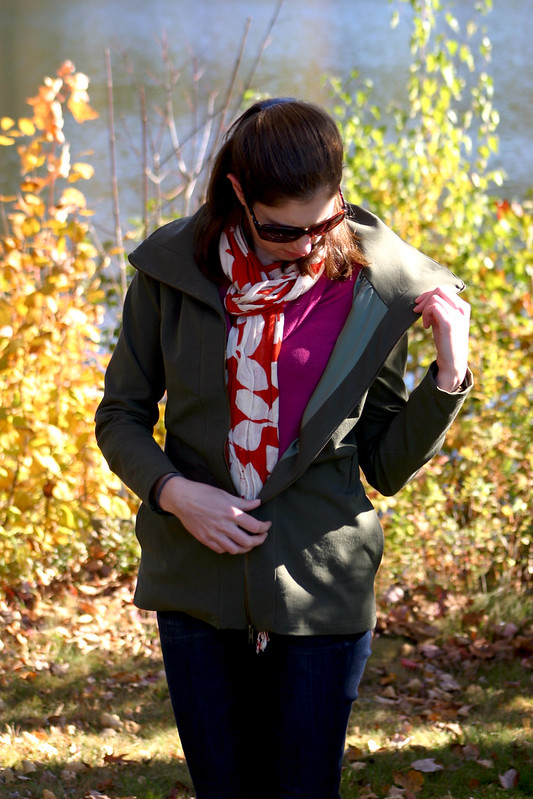
Pattern: Yona Coat from Named Patterns, c/o Indiesew
Size: 6
All Materials For This Coat:
- Outer fabric – cashmere wool from Metro Textiles
- Lining – coat-weight lining from Fabric Place Basement
- Diaper Flannel Interlining – Fabric.com
- Interfacing (hair canvas, sew-in) – Steinlauf and Stoller
- Fusible weft interfacing – Fabric Place Basement
- 1″ Button – Fabric Place Basement
Sweatshirt: Linden (just made, unblogged)
Jeans: Gap
Boots: London Fog
Hat: Topshop
To quote Led Zeppelin, I come from the land of ice and snow…no really, we have seven feet of snow here in the Boston area after this weekend’s little Valentine’s Day storm (10″ more, woof) and there’s major icicles of doom hanging off of every single building. I had a fear that once I finished this coat, which I’ve been chronicling since early January, the weather would turn and it would become too warm to get some wear out of it this year, kind of like what happened when I made my Anise wool jacket last spring. Seeing that we’re going to have the coldest temperatures of the season this week (it was 16 degrees in these photos) and there’s, of course, more snow on the way, I don’t think it’s going to turn spring-time with daffodils blooming anytime soon.
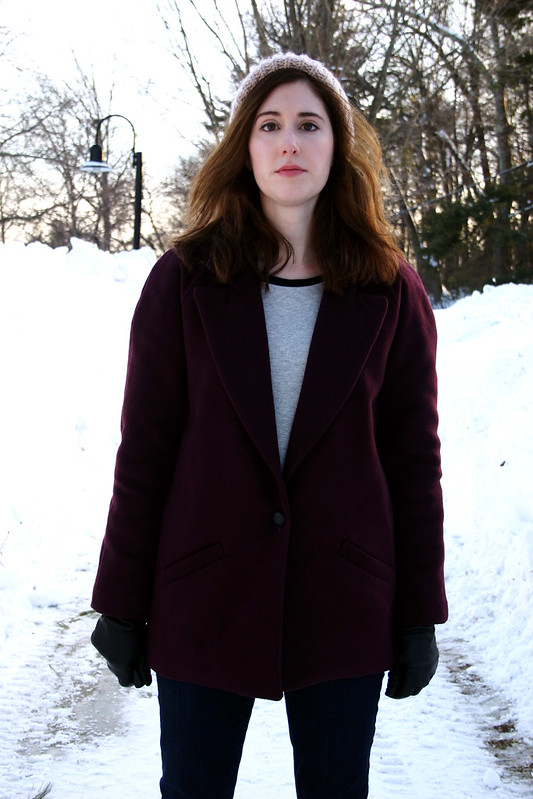
Even though I went through the whole “how to tailor a wool jacket” thing last year with Anise, I still learned a ton more this year making this coat. I pretty much threw away the instructions after I glanced through them to get a general idea of construction, and exclusively followed my tailoring book for every step of construction. Sure, you can make the coat following the included instructions, but it may not drape how you want it to, the collar may not roll right, and the lapels could flop around instead of staying put. There’s really a lot more to making a coat than just sewing the seams together – there’s a lot of secret engineering inside the coat that gives it shape and makes things lay just right.
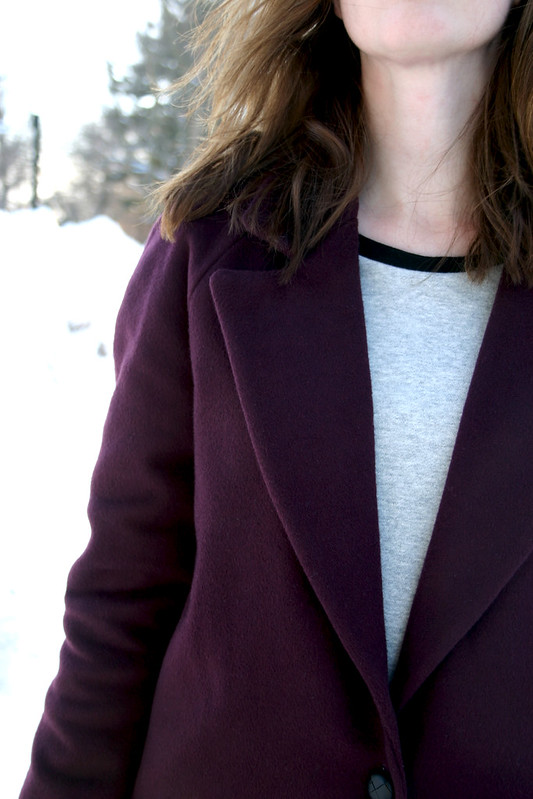
I am so damn happy with the lapels and collar, especially since this is the first time I used hair canvas and padstitching. Taping the roll line made a world of difference with the lapels laying flat – it’s a little puckery underneath, so I may not have adjusted the ease as best as I could, but you can’t see it so it’s ok. Adjusting for the turn of cloth of the collar ensured that the seam line doesn’t roll out in the back.
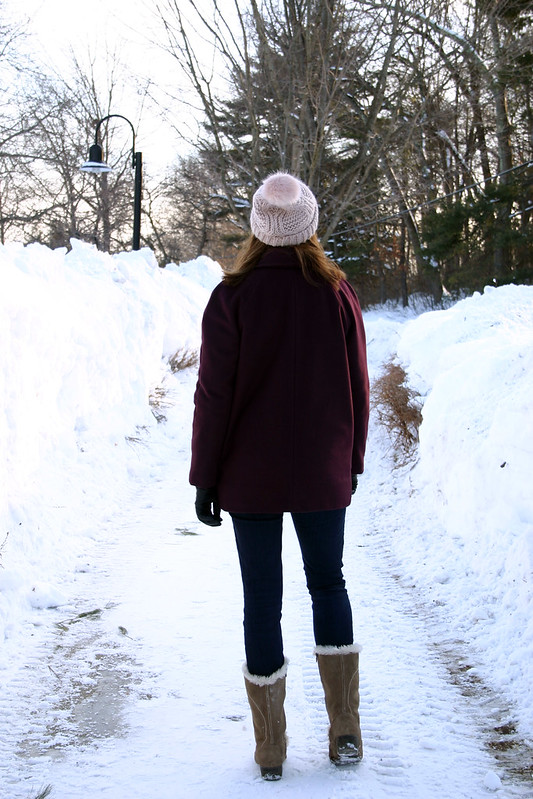
With the drape factor of the cashmere, it was definitely a good move to add a back stay and shoulder stays for the raglan sleeves. The sew-in interfacing didn’t make those parts of the coat too stiff, but there’s noticeable, light support through the back and no sag lines.
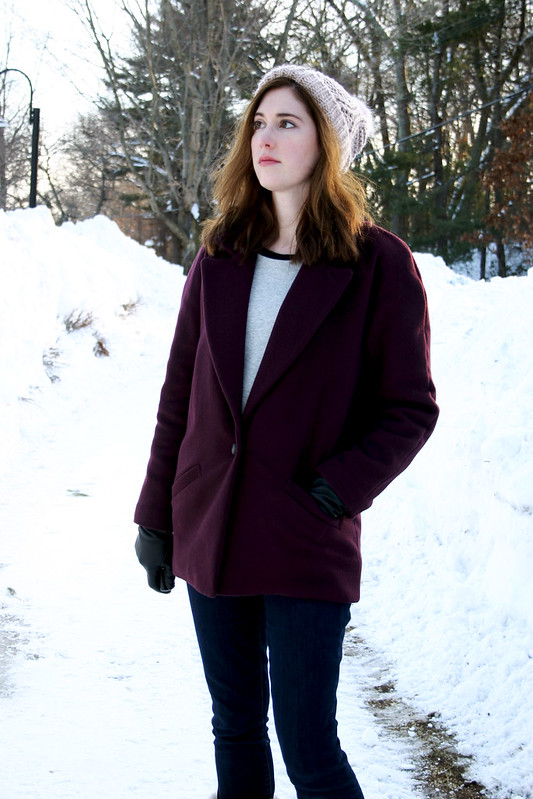
I drafted welt pockets in place of the patch pockets, since welts are a lot easier to sink your hands into when it’s cold, or for stashing your keys and phone. Kinda wish I placed them a bit higher, since the pocket bags are about six inches and hang down very close to the hem.
Yes, let’s talk about the length…it’s three inches shorter than it should be. This is due to the fact that I didn’t notice that the facing piece wasn’t drafted long enough for the front of the coat…grr. Because I didn’t want any exposed raw edges inside the coat, and I didn’t want to bag the coat lining, I had to shorten the length of the coat by quite a bit to finish the lining correctly by hand. It’s not ideal, but at least the coat still keeps my behind covered and warm.
Edit 2/20/15 – Allie from Indiesew contacted Named Patterns about my feedback – apparently, the coat has a wider turn-up at the hemline than what I used, and that the pattern drafting was intentional. Good to know if you plan and finishing the hem by hand vs bagging the lining.
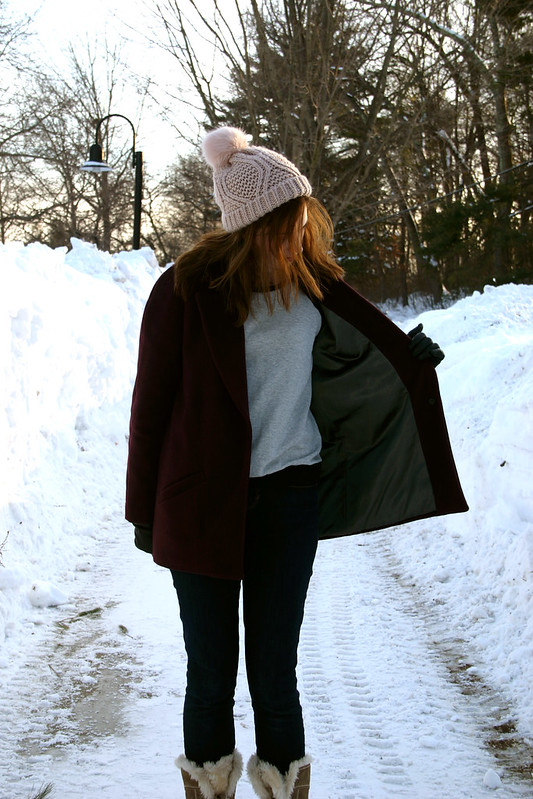
For the lining, I called B&J Fabrics in NYC to get some purple samples of their Sunback lining fabric (it’s a rayon lining backed with flannel), but when they arrived, the samples seemed so flimsy and I didn’t think I’d get the level of warmth/insulation I wanted. Instead, Fabric Place Basement had coat linings that were a thick, heavy rayon fabric with a brushed back that seemed like a good option if I interlined it with diaper flannel. Testing this coat out yesterday in 16 degree weather with a windchill of -1 confirmed that yes, this is indeed a warm coat! However, it’s also a really heavy coat because of the weights of all of the coat layers combined.
Something I didn’t take into consideration was the design of the coat vs. the drape of my version of the coat. Using all of these layers (diaper flannel, heavy coat lining, cashmere wool) made the coat a little thick and fairly structured. The bulk of the coat didn’t lend itself well to wearing it closed with a belt, as it’s designed – it just looked really awkward and made my midsection look chunky. Had I known this beforehand, I would have redrafted the front overlap to be wider than 1″ to better accommodate the button closure I had to end up using (I originally wanted to use coat snaps, but they were too big).

This pattern has some definite flaws that weren’t apparent when I made my muslin, but if you like the shape of the coat and have a couple of blazers or button-down shirts under your belt, it’s do-able to work through some of the issues. Morgan wrote a great post on all of the changes she made to the pattern, it’s a great reference that I wish I could have used when I made my coat.
So yeah, I made a winter coat! Now I can look all cool and stylish like the street-style city girls on Pinterest in their oversized coats, skinny pants, and Stan Smith sneakers (I’ll sub in my Classic Leathers instead). I also had plans to make the Grainline Cascade duffle coat this winter, but for my mental health, I think I need to start thinking warm thoughts and work, optimistically, on my spring wardrobe. Thank goodness Chris and I have a trip to Florida coming up in two weeks, we gotta get out of here!
Be sure to check out my other posts for coat construction details and tips:

